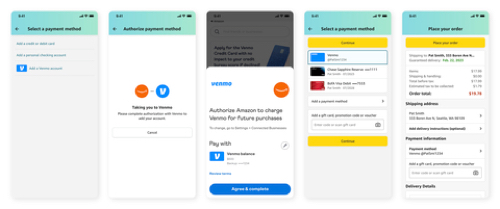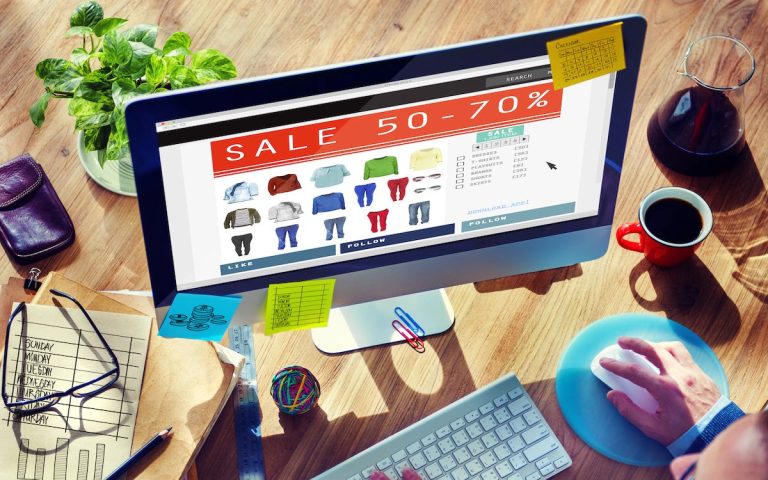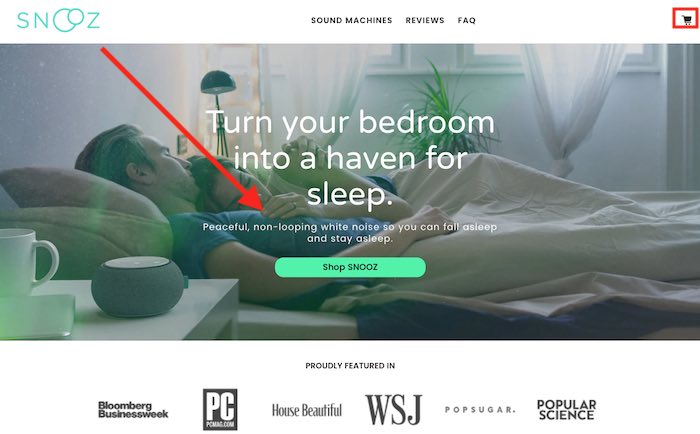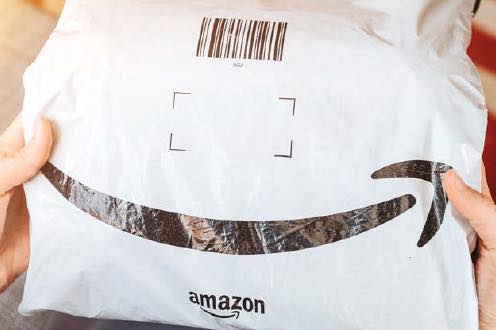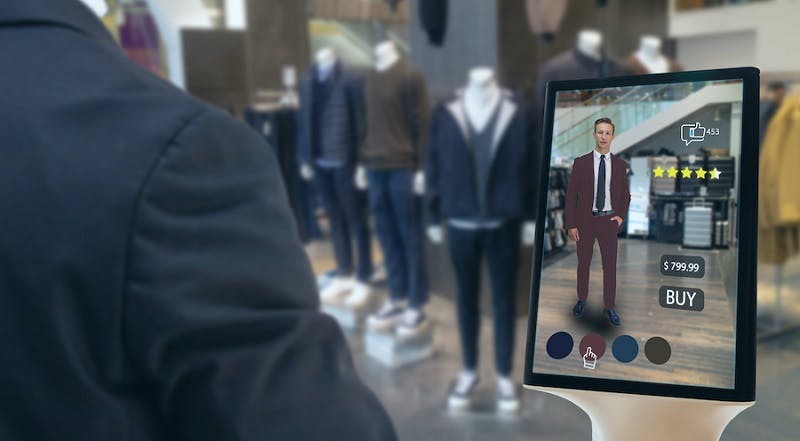
Not only will this benefit the consumers, he says; it will also benefit retailers’ bottom line.
In 2020, 3D and AR company Vertebrae updated its platform to enable shoppers to virtually try on digital items with even more accuracy, allowing them to interact with products at the precise size and scale they are in real life. Vertebrae, which partners with retail brands such as David’s Bridal and Adidas, says that clients report a 112% conversion lift and 106% increase in revenue per visit (RPV) for shoppers who interact with immersive content.
Luzon says that this needs to change, and sizing technology could enable this to happen. “Very soon, the vast majority of online apparel and footwear sellers will need to put policies in place that discourage returns. This might mean requiring customers to pay for the cost of reverse shipping, or giving store credit rather than a monetary refund.”
MySize’s Ronen Luzon suggests that once consumers try any kind of sizing technology, they will find it difficult to revert back to the previous ‘status quo’ – making trying on clothes in person or guessing online a jarring experience. What’s more, he also predicts that – as more and more consumers get used to the technology – retailers could make it mandatory.
Innovation in ‘try-on’ technology
— Vertebrae: 3D & AR for the Web (@vertebraeinc) April 21, 2021
“Some ecommerce industry leaders, including ASOS, are already proactively closing the accounts of customers who frequently engage in “bracketing” – meaning that they order the same item in multiple sizes, intending from the start to keep just one purchase and send the rest back.”
Advancements in the technology have also occurred in the past year or so, particularly within the clothing category.
“Once a consumer is comfortable making a purchase from their home, they really have no reason to go back into the retail store. Retail will always be a piece of the equation, but we will see brands with far less retail square footage as it will not be the primary driver of sales, but more of a showcase and marketing/branding opportunity,” she says.
Indeed, Deloitte also suggests that by investing in 3D models of products, retailers are able to make valuable cost reductions on photographers and physical models. When using traditional methods, says Deloitte, “the photography, warehousing, and storing of products can be expensive, time-consuming, and labor-intensive.”
Vertebrae is excited to push innovation in a dynamic way to grow companies beyond any experience on the web.
With both AR and 3D technology now impacting much more than the basic customer experience, it’s likely we will see even more investment and innovation in this space.
In turn, she says, “all design programs create files that are way too large to meet the social media and advertising requirements. This results in days of manual work by 3D artists for just a single 3D product.”
Social platforms and retailers invest in AR
Try it out!➡️ https://t.co/wOLZkARmgN pic.twitter.com/ggQwKscoB2
— VNTANA (@VNTANAlive) May 18, 2021
In contrast, “by experimenting with photo-realistic 3D models to create 2D images, companies such as Wayfair have found that they are able to both reduce the overhead associated with traditional catalog development methods, while creating the models they need to deliver augmented shopping experiences for their customers.”
Making 3D design more accessible
“While we’re finding more and more online retailers are embracing sizing technology and encouraging shoppers to use these features, I think it might actually become a requirement in the future,” he says. “I believe sellers will ask customers to tick a box confirming that they have used sizing tech to determine if the product they’re ordering is the correct size.”
The EY Consumer Index recently found that 60% of US consumers are currently visiting brick-and-mortar stores less than they did before the pandemic, while 43% of those surveyed shop more often online for products they would have previously bought in stores.
Accessibility has long been an issue when it comes to 3D, particularly in relation to large file sizes. However, companies like VNTANA – a 3D Content Management System – are aiming to solve this problem. Ashley Crowder, CEO and co-founder of VNTANA told Econsultancy that, “all of the major platforms (Facebook, Google, Snapchat, Shopify, etc) have invested billions of dollars to enable 3D advertising and visualisation, but 3D files have to meet specific requirements to work.”
“The most common reason cited for returns of clothing and footwear is fit, so by requiring customers to say they’ve done their due diligence, this can serve as an insurance policy for online retailers.”
Investment in any kind of technology can be costly, of course. However, when it comes to 3D imagery, it also depends on the processes that are used to develop them.
Request a demo now to see our solutions in action and answer key consumer questions with #3D & #AR visualization.https://t.co/oIqr1BvneG pic.twitter.com/gb4rPO5lPm
Perhaps, then, we can more confidently say that this technology will impact another area of retail – fulfillment. When it comes to 3D tech specifically, Crowder says that content management systems like VNTANA’s will enable brands to get their products onto customers’ screens before manufacturing has even begun, which could potentially impact supply chains.
Snapchat could be another option for retailers looking into virtual try-on solutions. Last March, the social media platform acquired Fit Analytics in a deal worth 4.4m. And in May, Snapchat unveiled a host of new AR try-on experiences at its Snap Partner Summit; the updated Lens Studio now includes “3D Body Mesh, Cloth Simulation, and a Visual Effects Editor, which make AR look and move more realistically than ever before.” Essentially, it will enable users to try virtual clothes on via their camera in a much more immersive and realistic way, giving brands further reason to invest in social commerce.
Indeed, returns are a huge issue, with 30-40% of online apparel and footwear sales ending in returns that cost more than US billion annually, according to one estimate by shipping and returns platform Narvar. It’s a huge hit to the bottom line, as well as being a logistics nightmare created by massive waves of returns.
Is 3D expensive or cost-effective?
The founder and CEO of MySize, Ronen Luzon, explained to Econsultancy that “customers can, with only a few sensor-enabled body measurements using their phone, buy online with confidence that the apparel or shoes they’re purchasing will fit every time; and the experience itself is more engaging. When shopping in store, our same platform allows customers to quickly check what items in their size are in stock and to skip the hassle of trying them on in the dressing room.”
Sizing technology isn’t an automatic solution to stopping returns, of course, and there’s no guarantee that online consumers will even use the tools. There is some evidence that the technology can help to reduce return rates; Drapers states that Zeekit’s partners – Asos, Adidas, Bloomingdale’s, Macy’s, and Galita – reported a 36% decrease in returns when its tool was used on the brands’ websites. However, over-estimating the technology (and its ROI) could potentially be dangerous. Daniel Bobroff, founder of consultancy Coded Futures, told Drapers: “The reality is that it’s a complex area, and retailers have educated customers to expect free returns. To suddenly turn to customers and say, ‘I expect you to behave differently now,’ is naive.”
❌Top 3 Reasons to Create a Digital Showroom❌
As Deloitte explains, 3D modelling is the most time-consuming and expensive option, though it is the most high-quality. On the other hand, photogrammetry – which automatically constructs 3D models from digital images – can actually be cost-effective and more accessible, particularly for retailers with vast physical product catalogues.
What does this technology mean for the future of retail?
This is only a prediction, of course, and recent statistics suggest that stores could actually be in for a resurgence. A survey by Gekko found that 70% of UK consumers want to return to the high street post-pandemic, with one of the key motivators being the ability to physically interact with products. With this type of demand, the existence of sizing tech or 3D ‘try-on’ tools may become less relevant.
Consumers are already shopping online more than ever before, of course, but these solutions could further accelerate the shift to ecommerce – particularly within fashion.
Incandela also hinted that Walmart will use Zeekit’s technology to create other fashion experiences, “including the ability to build the world’s largest virtual closet and mix and match clothing seamlessly.”
With further innovation in sizing technology, could we see even more consumers ditching physical retail for specific products or journeys?
Augmented reality solutions or virtual ‘try-on’ technology have become more relevant in the past 18 months, as consumers have shifted to online shopping during Covid-19 lockdowns. From furniture brands like Ikea to beauty brands including L’Oréal, many retailers use the tools to enable consumers to determine how products might look in the context of real life.
New technology is opening up further opportunities within ecommerce, as AR and 3D sizing solutions help online retailers to solve challenges around size and fit.
Many retailers are now use online sizing software, but Walmart’s recent acquisition of Israeli company Zeekit is one of the first major examples of a big retail investment. Announcing Walmart’s plans, Denise Incandela, EVP of Apparel and Private Brands for Walmart US, said: “Virtual try-on is a game-changer and solves what has historically been one of the most difficult things to replicate online: understanding fit and how an item will actually look on you. Zeekit will help us deliver an inclusive, immersive and personalised experience for our diverse customer base.”
Consequently, VNTANA has created a new 3D Digital Showroom which allows brands to create secure and shareable 3D digital showrooms with their existing designs. Not only does this mean the ability to create 3D product images for ecommerce sites, but also 3D product samples (rather than physical samples) to enable retailers to get feedback and sell products before investing in the manufacturing process.
MySize is another company using AR to enhance ecommerce CX. The company recently launched an avatar solution to offer a gamified try-on experience. Using sensors in a smartphone, MySizeID gives a highly visual and accurate representation of how clothing will fit on a customer’s body. The widget also directly syncs to retailers’ existing size charts, and includes SDK integration, making it an accessible solution for big retailers.
Another update from Snap is the addition of DIY templates for AR shopping. Carolina Arguelles, Global Product Marketing Lead, Augmented Reality at Snap, explained to Forbes: “Brands can hire experts to create these experiences but, if they’re savvy, they can also just plug 3D models they would have from their product development cycle into Lens Studio for free,” she says.
Crowder elaborates: “This is not just for web, mobile and social, but once you have your product in a standard, sharable 3D file format you can start taking advantage of NFTs (non-fungible tokens) and even get your products in game-engines where people purchase digital assets to dress their avatars. Both open up whole new revenue streams for the fashion industry.”
1.Increase #sales! #3D gives buyers a better understanding of the product.
2.Reduces Carbon Footprint:????
3.Saves MONEY! No longer is there a need to spend ???? on countless physical samples!
Ashley Crowder suggests that AR and 3D technology will have an impact on brick-and-mortar and omnichannel retailers, too.
“Creating physical samples is a huge cost and often takes longer than planned, leading to late deliveries to retailers,” she says. Crowder cites US clothing manufacturer Mamiye Brother’s as an example of a company that has sold to retailers using 3D digital samples instead of physical samples. “This results in increased sales and huge cost savings. There is no going back after seeing the benefits to the bottom line,” she explains.

